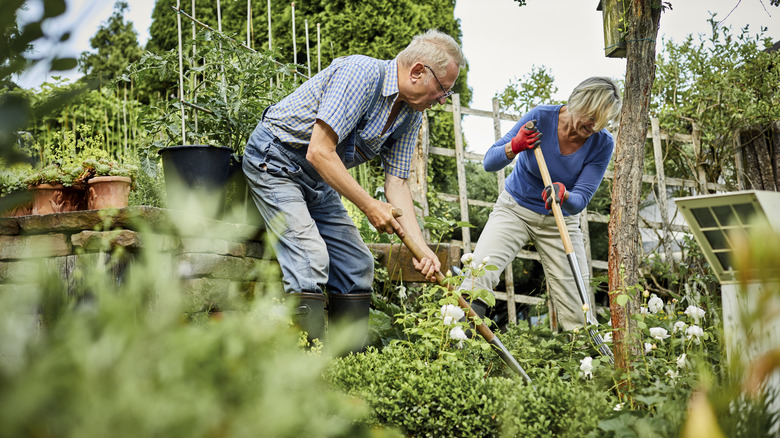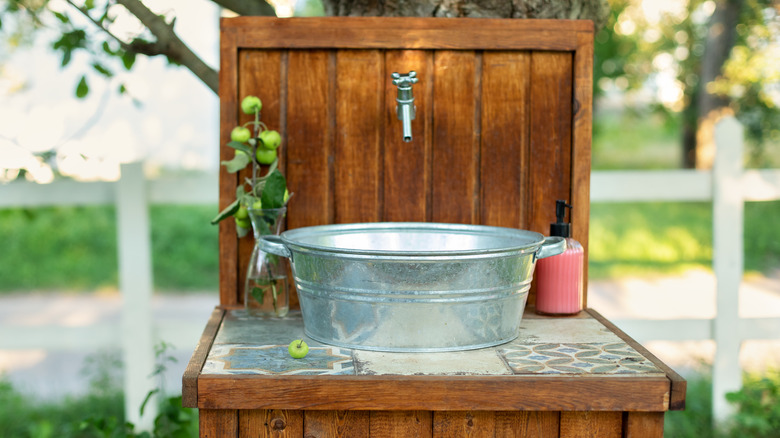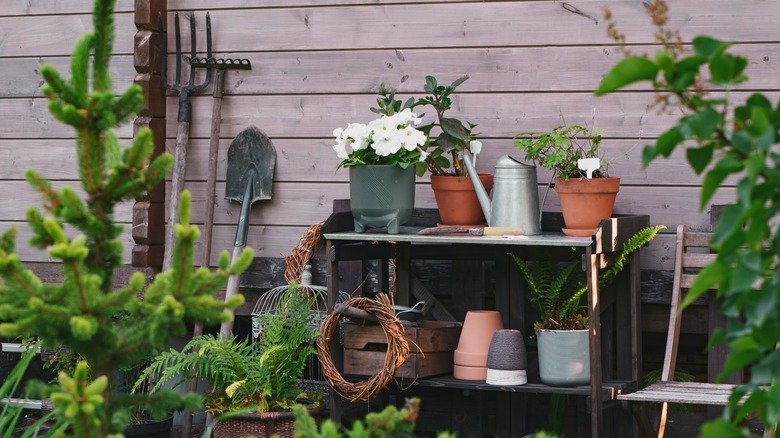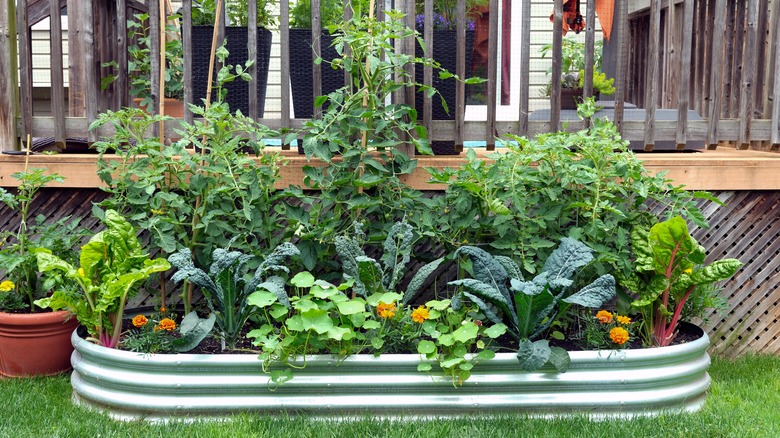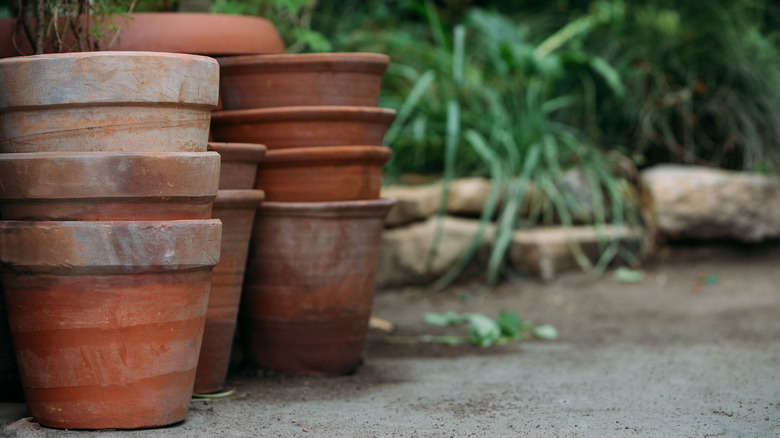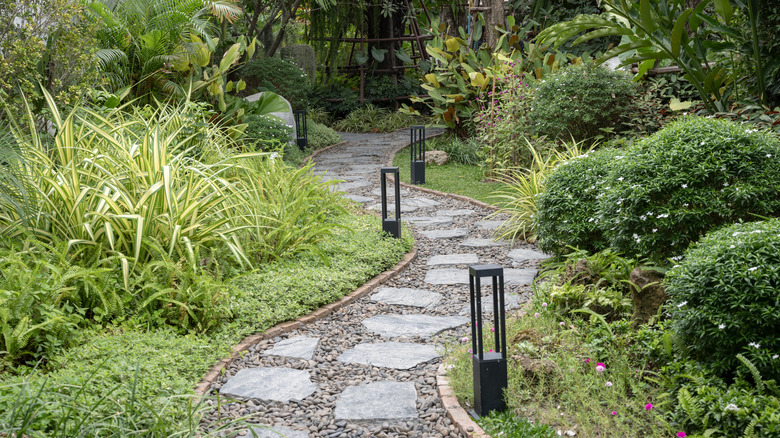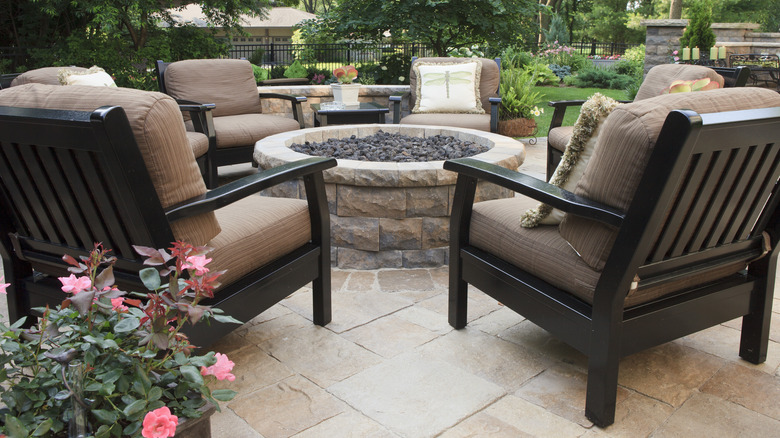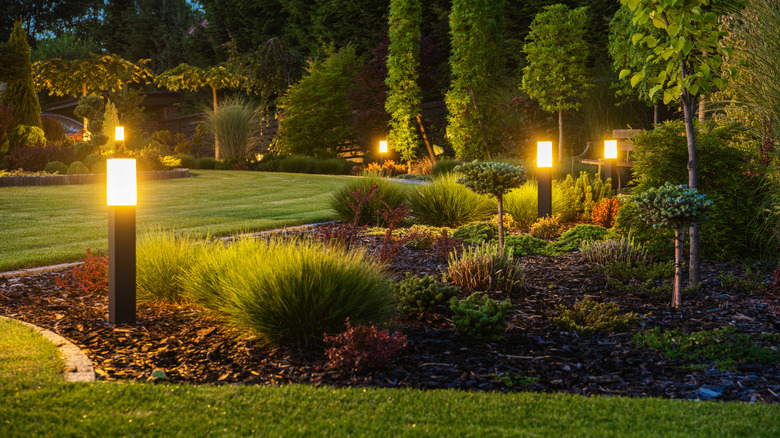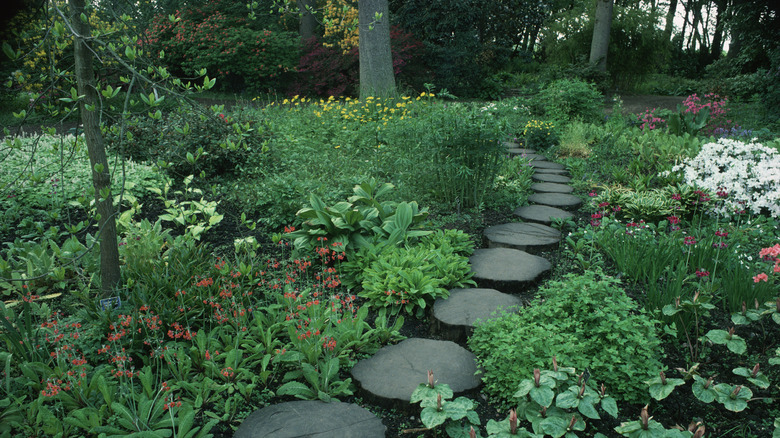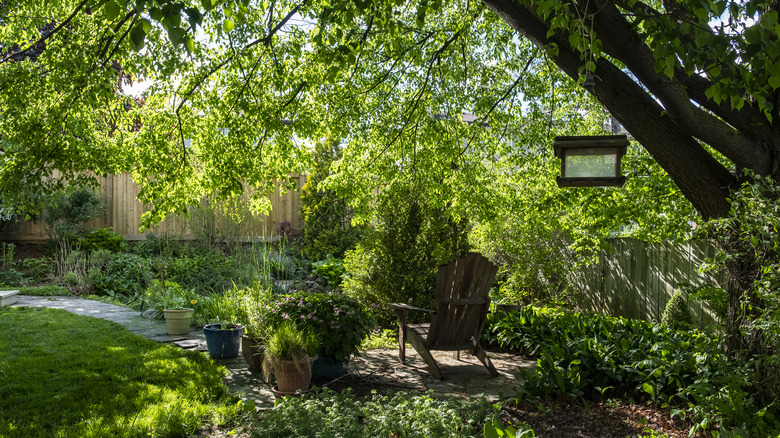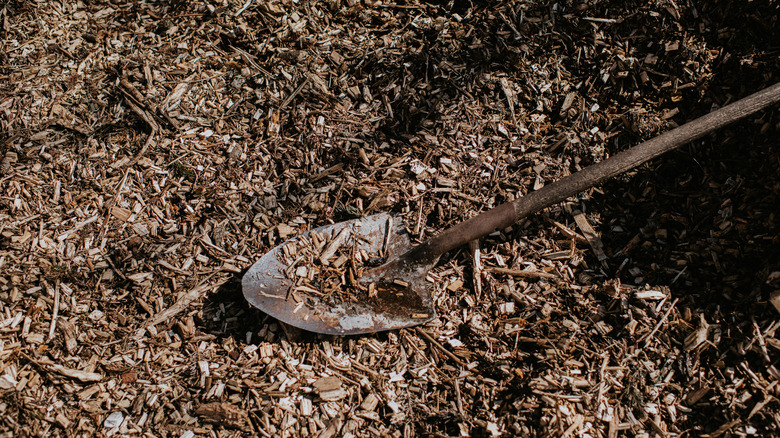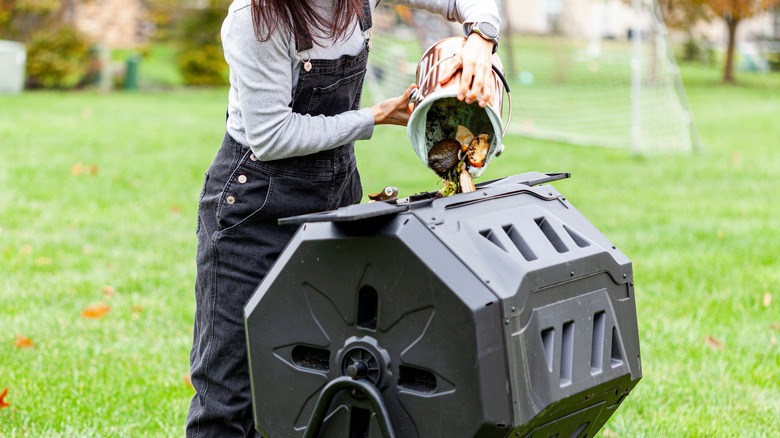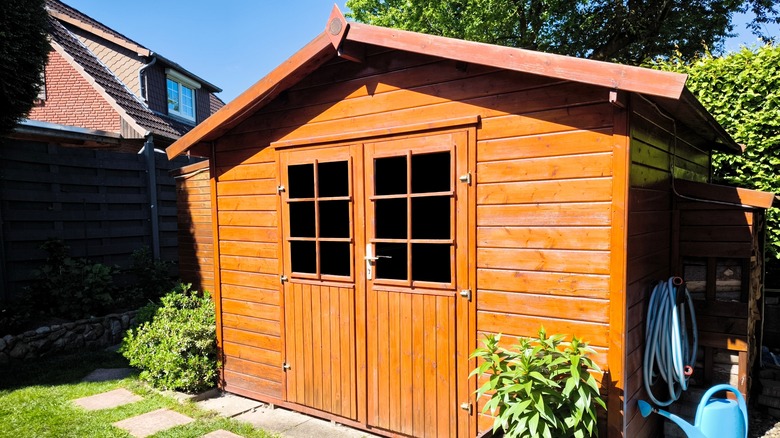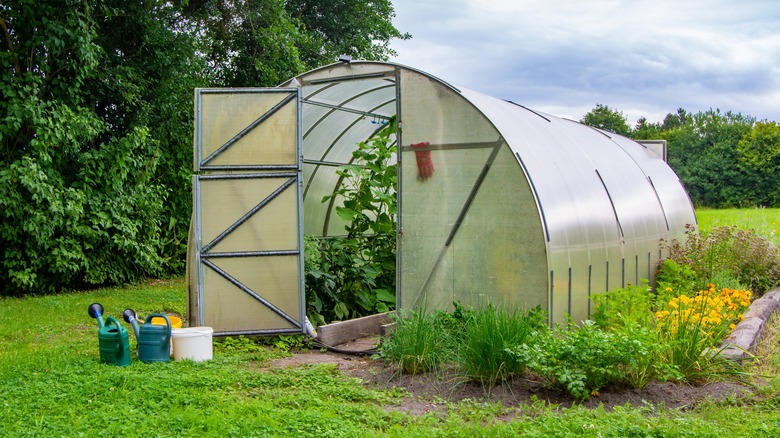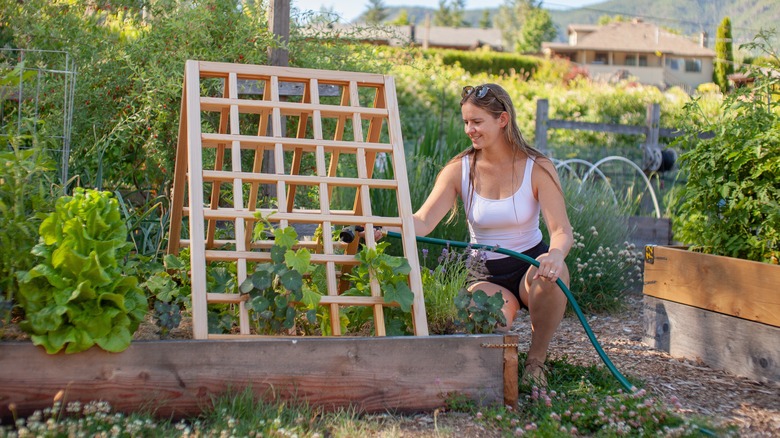15 Outdoor Features That Make Every Gardener's Life Easier
We may receive a commission on purchases made from links.
Gardening is a hobby that lasts a lifetime, but it can also be extremely hard work. Along with lots of bending, digging, and heavy lifting, to create a beautiful garden you'll have to regularly weed and prune, monitor for pests, and attend to the different watering needs for various plants. It's easy enough to find gardening tools that can simplify some ongoing maintenance tasks, like easy-reach pruners and long watering wands. Choosing low-maintenance plants is another helpful way to make gardening safer and simpler. But if you're considering major improvements to your garden this year, from the addition of raised beds to installing an irrigation system, there are 15 outdoor features that can make gardening easier.
You won't find tools like wheelbarrows for hauling around heavy plants or thick pads to temporarily cushion your knees on our list. Instead, we focused on permanent changes and simple additions anyone can easily make to their outdoor space. Some of our suggestions are hardscaping improvements that do more than just reduce the time, effort, and hassles involved in gardening maintenance — they can also increase your home's value. Other features will help you grow healthier, taller, and more robust plants. Finally, a few of the ideas don't just improve the aesthetic quality of your garden; they also offer improved function and safety.
An outdoor sink comes in handy after digging in the dirt
Even if you're diligent about wearing gardening gloves, sometimes you just have to get your hands dirty. An outdoor sink is an excellent way to clean up after a long day of digging, planting, or harvesting. It can also help you more easily wash dirt off your tools. Residual moisture can cause them to rust, while fungal spores and diseases can be transmitted from one plant to another.
A workstation is perfect for potting and transplanting
Gardening is a great workout, but it also frequently causes back pain. In addition to providing a place to organize your tools and supplies in one place, a tall gardening workstation also brings tasks like transplanting up to a comfortable height that can reduce neck and back strain. Pick a gardening work bench that has drawers, shelves, or hooks, depending on how you prefer to store your tools. Make sure the material is sturdy and weatherproof, opting for thick cedar or metal surfaces instead of flimsy wood or plastic.
Raised beds give more control and easy access to your plants
Raised beds are another way to drastically improve accessibility for easier planting, weeding, and harvesting. Whether you build a DIY raised bed or purchase an easy-to-assemble version, their virtues are practically countless. In addition to controlling the soil to make it ideal for your specific plants, you can also extend your growing season, since raised beds have well-draining soil that warms quickly in spring. They also make crop rotation easier, which is especially important if you want to grow abundant vegetables.
Extra pots come in handy for temporary storage and overwintering
A serious gardener can never have too many planters. Gathering and storing them together, in a dedicated spot, will make your life easier when it's time to use a specialized potting mix or fertilizer. It's also convenient to have spare pots you can use to isolate a favorite plant if it's struggling with a pest infestation. Beyond adding visual appeal, planters are also portable, which is useful when plants need to be overwintered in a climate-controlled spot.
Paths make your garden easier to navigate
Few pleasures are greater than meandering down a garden walkway. From stone to brick, concrete to tile, there are many durable materials you can use to create a path. Opting for a permanent mulch product like Gardener's Supply Company Recycled Rubber Walkway can do more than just enhance your landscaping. The eco-friendly material also helps prevent weed growth along border edges. No matter which material you choose, you'll need to give your walkway a stable base. Also, don't forget to locate underground pipes and utilities before you start the installation process.
Comfortable seating will let you enjoy your garden
Do you often need to take a break after tilling particularly hard and rocky ground? Want to enjoy a quiet afternoon surrounded by your favorite blooms? Locating comfortable and well-defined seating areas near your gardens is important. Enjoy the shade of your favorite tree by building a wrap-around bench. Let a low retaining wall do double-duty as seating for larger gatherings. If you love to eat outside, consider a picnic bench. Or just add a few Adirondack or cushioned chairs to your yard. Bonus points if your seating area is next to a great smokeless fire pit.
Good lighting can make your garden shine at night
Good lighting makes for great gardens, and lighting does more than add visual appeal. Installing solar-powered products, like waterproof LED walkway lights, fence post cap lights, motion detecting lights, string lights, decorative light posts, or uplighting on trees, can also make it easier and safer to navigate your garden at night. Illuminating paths and potential trip hazards, like uneven ground or garden edging, can help reduce the risk of injury. And, according to Zillow, adding installing lighting can also increase the value of your home.
Steppingstones are ideal in densely planted or wet areas
When you need a simple solution that can improve access throughout your garden, look no further than the humble steppingstone. There are countless options available, from the bestselling Spoontiques Decorative Stones to DIY versions you can create on your own. Steppingstones are ideal if you want to reach plants in the back of your garden beds without compacting the soil or tracking it inside your house. Steppingstones also help protect roots, especially in areas of your garden that are new or densely planted.
Shade trees reduce runoff and improve air quality
It may surprise you to hear that shade trees can make a gardener's life easier. There are special care tips for growing a flourishing shade garden (and some common errors to avoid). But overall, shady areas provide gardeners with cooler temperatures, soil that stays moist for longer, improved habitats for local wildlife, and windbreaks that can make your entire yard more comfortable. In addition to improving air quality, trees also provide hands-off stormwater retention and erosion control. These are important considerations for gardeners as extreme weather events become more common.
Irrigation systems provide hydration with minimal effort
Consistently providing your plants with the right amount of water is one of the key steps to a flourishing garden. Watering by hand can be a challenging and time-consuming task. Installing an irrigation system for your flower beds or yard can make the job much easier. There are a variety of styles available for different applications and plant needs, from simple soaker hoses to drip irrigation systems and sprinklers. Whichever you choose, installing an irrigation system can ensure your plants routinely get the moisture they need to thrive.
You can never have too much mulch
If pulling weeds by hand is the bane of your existence, or you want to enrich your poor soil without the hassle of frequently applying fertilizer, mulch may be the answer. From weed control to improving soil biology, creating pollinator habitats to adding curb appeal, there are countless ways to use mulch in your yard and garden. Both organic and inorganic mulches can make a gardener's life easier. Once applied, mulch can do the job for months, or even years, at a time.
A composting system can promote soil health and plant growth
Setting up a composting tumbler is another way gardeners can make their lives easier. Fed up with your family's food waste? Tired of making trips to big box stores for chemical fertilizers? If you don't have room for a large composting pile in your backyard or just want to make the process easier on yourself, try putting a compost tumbler right outside your kitchen doorway. Typically comprising a rodent-proof bin with a handle, you'll simply add compostable scraps, and crank the container to tumble the contents until they decompose.
A small shed is perfect for storing gardening and lawn tools
Every gardener needs a shed. Keeping expensive garden tools or equipment stored away from the elements extends their lifespan. Larger sheds are ideal, since they provide space for starting seeds or repotting root-bound plants in addition to storage. But even smaller models, like the highly rated Rubbermaid Vertical Resin Outdoor Shed, can encourage you to keep your shovels, rakes, and other tools organized and protected. Spend some time considering how to best use pegboards and utility hooks inside your garden shed to keep your favorite tools right at your fingertips.
Greenhouses extend the growing season
If you have the space, take control of your gardening conditions and extend your growing season with a greenhouse. In the great outdoors, a gardener's life can quickly become more difficult with prolonged periods of rain or drought, pests, or drastic fluctuations in temperature. Make growing your favorite flowers or vegetables much easier by housing them inside a greenhouse. If you're growing vegetable crops, good temperature management and an irrigation system will increase production.
A garden trellis improves air circulation and simplifies harvesting
There are almost as many kinds of trellises as there are plants to grow. Beneficial for climbing, tall, and top-heavy plants, flower and vegetable supports come in a huge range of options. From arches like a squash tunnel or arbor, to obelisks, grow-thru peony holders, metals cages, and classic cedar A-frames, plants that are supported are easier to reach and harvest. You'll also have less rot and pest problems to battle, since keeping plants off the ground improves airflow and sunlight exposure.
